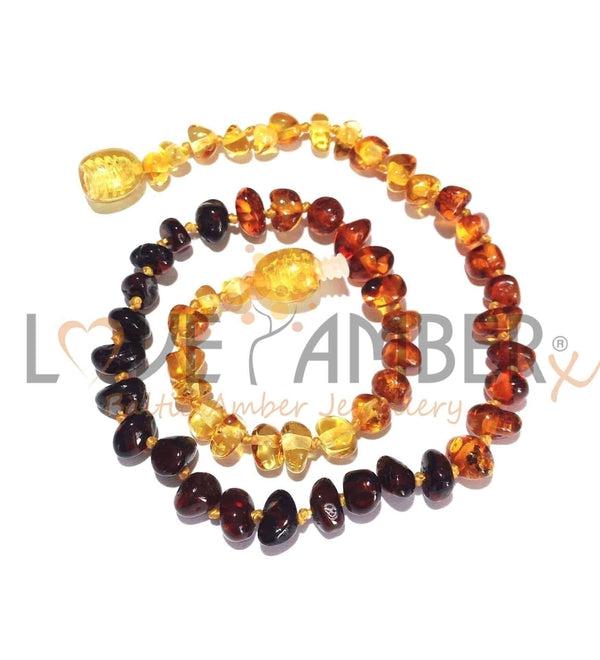Things to look for when choosing the best amber jewellery or gemstone jewellery

The popularity of amber jewellery has grown over the last few years. When we started out over 6 years ago we were one of the first UK amber online retailers. As popularity has grown the market has been flooded with cheap knock-offs which on the surface have not gone through the correct procedures. The biggest clues are talked about in my other blogs. The main thing is price. Real amber or gemstones are not cheap. People often shop around for the cheapest products online but in this case it is not advised. You could find that you have just ended up with a lump of useless plastic instead. You also don't know what is in it which could be a major issue. So how do you choose amber jewellery? Take a look at my guide below.
Choose a necklace or anklet with the hand tied knots in between each bead. Paediatricians warn of the risk of choking if the beads are put in the baby's mouth and inhaled, which could happen if the necklace breaks and the beads scatter.
- As a safety precaution, there should be a hand-tied knot between every bead, as well as the fastener. This structure ensures that if the necklace is strongly yanked or pulled, only one bead if any will come loose, rather than all of the beads.
- Supervise your child when they are wearing the necklace so that you can act quickly and ensure no beads are swallowed if the necklace does break.
Consider the type of fastening clasp. Necklaces and indeed any jewellery placed around a child's neck, pose a significant risk of choking and strangulation. However, there are specific designs that will ensure the necklace breaks under stress if it becomes entangled, reducing this risk. The screw clasp design keeps the necklace secure around the child's neck and is difficult for a child to unhook, which keeps the child from taking the necklace off on their own. The key is to ensure that it does not dangle down so it does not become caught on anything in the first place and to prevent chewing.
Avoid products marketed as "copal amber." Copal is an immature resin (typically less than 250 years old) often passed off as amber. Unlike amber, copal is not a fossilised and hardened resin.
- Do not purchase amber necklaces that advertise amber from Columbia, Madagascar or Kenya. These geographic areas have rich Copal mines, but do not produce true amber.
- You can test if your product is copal or amber by rubbing with a solvent such as acetone or alcohol. Copal will soften and get sticky when the solvent is applied whereas true amber will remain hard and the solvent will simply evaporate off.
- If you do perform this test, be sure to wash the necklace carefully with detergent and warm water before putting the necklace on your child!
Avoid discounted amber merchandise. The price of genuine Baltic amber products begin around £15 and can be as much as £50 for one necklace. If a necklace is for sale at a huge discount, question the vendor about its authenticity.
Pay attention to the colour. Natural Baltic amber comes in a variety of colours and tones. Because amber is a natural material, expect some colour inconsistency between beads and inclusions (organic material) such as grass or even insects. Common Baltic amber colours are honey, butterscotch, cognac, dark cherry and green. Cherry Red amber is made by heating.
Inspect the necklace frequently to ensure that it is in good condition. Look for any missing beads or broken pieces. Also, check the screw clasps for cracks.
- Amber is an incredibly hard resin, so damage shouldn't happen often with a high-quality product. Amber, however, will shatter if crushed.
- As a safety precaution, do not put a damaged necklace on your child.
Clean the necklace with some lemon juice, warm water and an old toothbrush. After several weeks or months of use, the necklace may become grimy and require cleaning.
- Fill a bowl with warm water and add a small amount of lemon juice.
- Dip your necklace in the bowl and gently, using a downward and back and forth motion, start brushing your necklace
- Don't scrub too hard to avoid damaging the string.
- Allow to air dry or dry off with a towel.
- If the stones look dull after this process, rub a small amount of olive oil on the stones to recover the sheen.